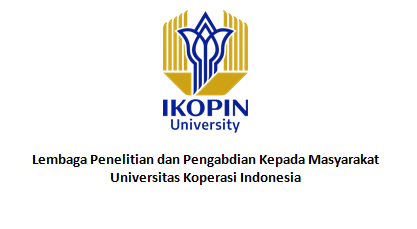Pelatihan Peningkatan Pemahaman Distribusi dan Perhitungan Sisa Hasil Usaha bagi Pengurus Koperasi Mikael-Surakarta
DOI:
https://doi.org/10.32670/ecoopsday.v5i2.4694Keywords:
Surplus (SHU), Cooperative Members, Economic Benefits of Cooperatives, SHU Calculation Formula.Abstract
Surplus (SHU) is the cooperative's net income from business activities carried out within one year. SHU is a form of indirect economic benefit (METL) that a cooperative can create for its members, which is a reflection of members' transaction contributions to one or more cooperative business units. As an indirect economic benefit, cooperatives generally have written provisions (as outlined in the cooperative's Articles of Association and Bylaws) regarding the distribution of Cooperative SHU, which, among other things, consists of SHU for Members, Management and Supervisory Funds, Work Area Development Funds, Reserve Funds. , Education Funds, expressed in percent; However, this is not the case with determining the member's share SHU calculation formula, namely the formula for determining how much SHU will be received by each member of the cooperative. The formula for determining the SHU that is part of each member is something that is considered important and necessary, because it is the main characteristic of the cooperative, in this case showing how much the cooperative's ability to create METL for its members. Determination of the SHU formula for members' shares is an embodiment of one of the principles of cooperatives, namely that the distribution of Surplus (SHU) is carried out fairly in accordance with the services or contributions of each member in utilizing cooperative business services. Thus, the formula used to calculate the SHU amount for each member must truly show fairness, which is based on the size of the member's contribution in utilizing one or several cooperative business units. To ensure fairness in determining the formula for calculating members' share of SHU, cooperatives absolutely must have records of member transactions in all the business units they run. Member transaction data is used to calculate the amount of contribution of each member to the cooperative business unit. This Community Service Activity (PKM) aims to increase the Management's understanding of the importance of distributing SHU fairly to each member, and for this reason the cooperative's readiness is required to record all transactions in each business unit it runs; Accuracy of member transaction data will ensure fairness and increase members' trust in the cooperative.
Downloads
Published
How to Cite
Issue
Section
License
Copyright (c) 2024 Yuanita Indriani

This work is licensed under a Creative Commons Attribution-NonCommercial-NoDerivatives 4.0 International License.


.png)



 NTER
NTER
